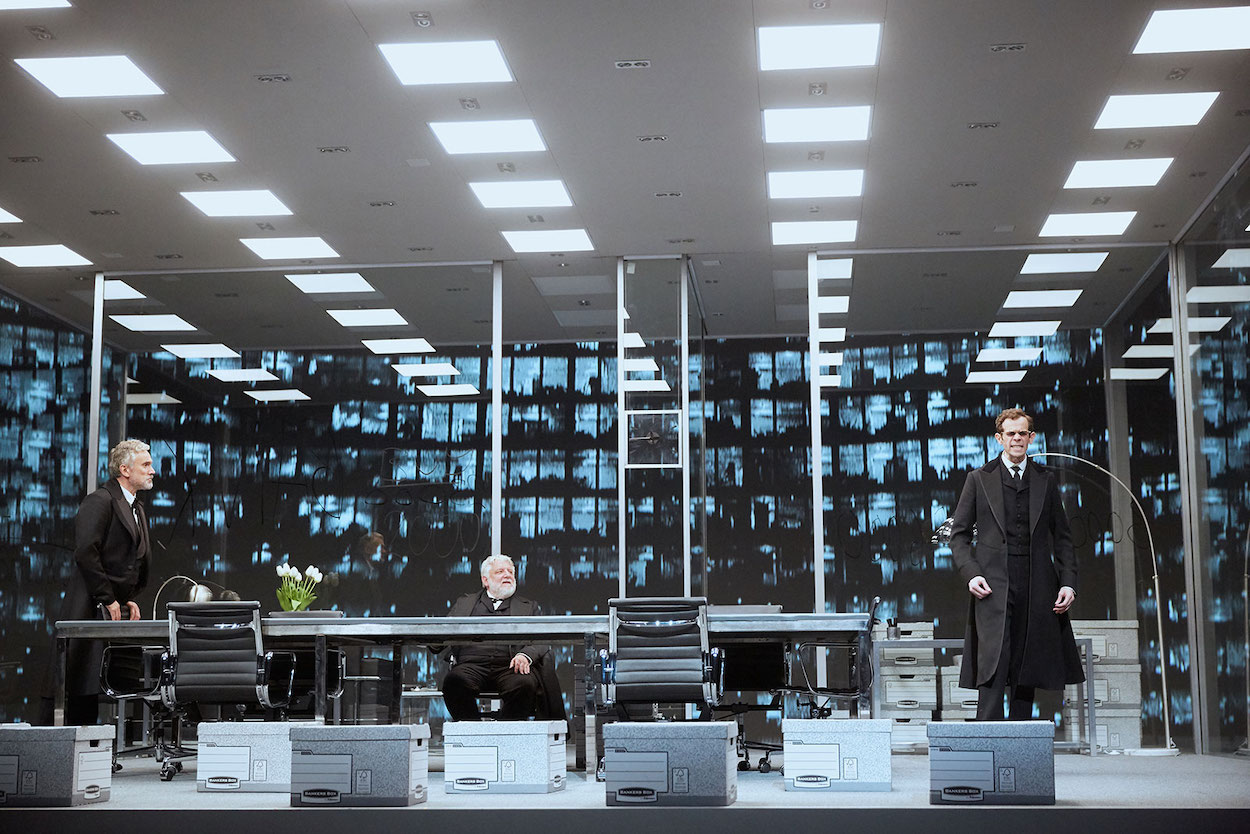Throughout The Lehman Trilogy, the acclaimed play written by Stefano Massini and adapted by Ben Power that chronicles the relentless rise and catastrophic crash of American capitalism, the unforgettable set plays a starring role. The three-hour parable, which spotlights three generations of a Bavarian Jewish immigrant family that went on to found the financial firm Lehman Brothers, takes place in a rotating glass box masquerading as a midcentury office, complete with Eames swivel chairs, Arco lamps, large boardroom tables, and stacks of gray cardboard Bankers Boxes that Lehman Brothers employees carried out when the bank collapsed in 2008. The austere structure rotates as the tragedy unfolds, assuming the pivotal role as the fourth character while illuminating two centuries of the Lehman lineage, from Alabama’s rural cotton fields to the precarious markets of Wall Street.
The cinematic setting is the work of Es Devlin, the celebrity-favorite set designer renowned for devising “stage sculptures” for Kanye West, kaleidoscopic mirrored runways for Louis Vuitton, and replicas of Compton buildings for the 2022 Super Bowl Halftime Show. Though such marquee commissions for brands and musicians often come to mind first when plumbing Devlin’s achievements, her most technically dazzling work has been in the theater: Benedict Cumberbatch’s Hamlet at the Barbican and the National Theatre’s 1998 revival of Harold Pinter’s Betrayal among them. Now, thanks to her work on the Sam Mendes–directed run of The Lehman Trilogy on Broadway, the three-time Olivier Award winner can add another prestigious accolade to her roster: The Tony Award for Best Scenic Design of a Play.


